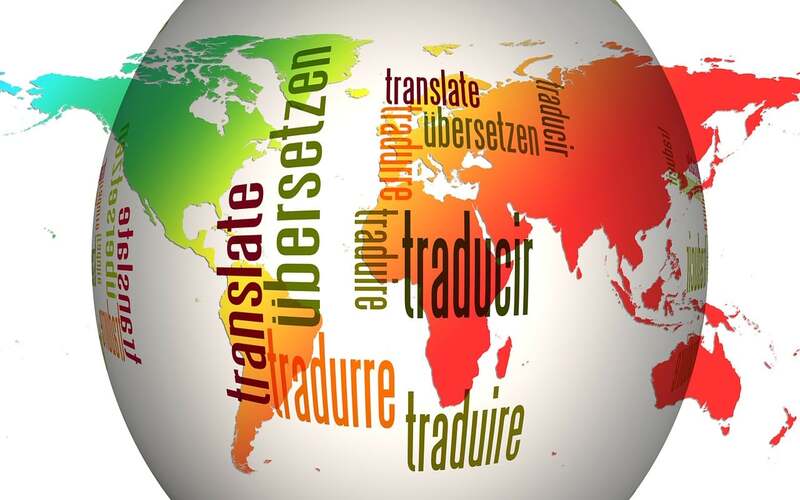
Translation vs Transcription: Understanding the Key Differences and Importance in Communication
In today's globalized world, communication is key to bridging cultural and linguistic barriers. Two essential processes in this regard are translation and transcription. While both involve converting one language or form of communication into another, they have distinct differences and importance. This article explores the key differences and importance of translation and transcription in communication.
- Translation: Translation is the process of converting text, speech, or other forms of communication from one language to another. It involves understanding the source language, identifying its meaning, and then expressing it in the target language in a way that is grammatically and contextually correct. Translation is crucial in various settings, including international business, diplomacy, and media.
- Transcription: Transcription, on the other hand, is the process of converting spoken language into written or digital form. It involves recording a spoken message and then transcribing it into text or another format that can be easily understood by others. Transcription is essential in settings where spoken communication needs to be documented, such as legal proceedings, interviews, and focus groups.
- Key Differences: While translation and transcription share some similarities, they have distinct differences. Translation involves converting language, while transcription involves converting speech. Translation requires understanding the meaning behind the words, while transcription requires understanding the spoken message. Additionally, translation involves multiple languages, while transcription typically involves a single language.
- Importance: Both translation and transcription play crucial roles in communication. Translation allows individuals and organizations to communicate across language barriers, promoting global understanding and cooperation. Transcription, on the other hand, allows for the documentation and preservation of spoken messages, ensuring that important information is not lost.
What is the difference between translation and transcription?
The primary difference between translation and transcription lies in the process and the medium being converted. Translation involves converting material from one language to another, often requiring an understanding of the meaning behind the words and the context in which they are used. This process is essential in international communication, business, and diplomacy, as it allows individuals and organizations to communicate across language barriers.
On the other hand, transcription involves converting spoken language into written or digital form. This process typically entails recording a spoken message and then transcribing it into text or another easily understandable format for others. Transcription is crucial in settings where spoken communication needs to be documented, such as legal proceedings, interviews, and focus groups.
To put it simply, translation focuses on converting language, while transcription focuses on converting speech. Both processes play essential roles in communication, each with its own unique importance and differences.
What is the process of translation?

The translation process involves converting text, speech, or other forms of communication from one language to another. It is a complex and intricate endeavour that bridges linguistic and cultural gaps to convey a message accurately and effectively. The primary goal of translation is to transfer the content of an original text from one language to another without violating its integrity. The translation process typically involves several steps:
- Pre-Translation: This involves researching the source text and its context, as well as the target language and its cultural nuances.
- Translation: In this step, the translator converts the source text into the target language while maintaining the original meaning and context.
- Post-translation: After the translation is complete, the text is reviewed for accuracy, clarity, and cultural appropriateness.
- Editing: The translated text is edited to ensure it reads smoothly and effectively in the target language.
- Proofreading: A final review is conducted to catch any errors or inconsistencies in the translated text.
- Quality Assurance: The translated text is checked against the source to ensure it accurately conveys the intended meaning.
Therefore, the translation process is a complex and multi-step endeavour that requires careful attention to detail and a deep understanding of both the source and target languages and cultures.
Read Also: 5 Facts of Translator for Side Hustle
What is the process of transcription?

The process of transcription involves converting spoken language into written or digital form. It typically involves recording a spoken message and then transcribing it into text or another format that can be easily understood by others. Transcription is essential in settings where spoken communication needs to be documented, such as legal proceedings, interviews, and focus groups. The process of transcription can be broken down into several steps:
- Recording: The first step in transcription is to record the spoken message. This can be done using various methods, such as an audio recorder, a digital voice recorder, or a smartphone.
- Transcription: Once the message has been recorded, it is converted into text or another format that others can easily understand. This involves listening to the recording and typing out the message word for word.
- Editing: The transcribed text is then edited to ensure it reads smoothly and effectively. This may involve correcting any errors or inconsistencies in the text.
- Proofreading: A final review is conducted to catch any remaining errors or inconsistencies in the transcribed text.
- Formatting: The final transcription is formatted according to the desired output format, such as a text document, a digital file, or a printed document.
Broadly speaking, the process of transcription involves recording a spoken message, transcribing it into text or another format, editing the transcription, proofreading it, and formatting the final output. This process is essential in settings where spoken communication needs to be documented and preserved for future reference.
What are some challenges to using transcription or translation in communication?
There are several challenges associated with using transcription or translation in communication, including:
- Accuracy: Ensuring that the transcribed or translated content is accurate and free from errors is crucial. Even a small mistake can lead to miscommunication or misunderstandings.
- Context: Translating context is difficult due to its sub-aspects such as background information, language style, and tone. For example, cultural nuances and regional dialects can be challenging to convey accurately
- Audio Quality: In transcription, the quality of the audio recording can significantly impact the accuracy of the transcribed content. Noise, background noise, and poor audio quality can make it difficult to transcribe certain lines of dialogue.
- Time-consuming: Both transcription and translation can be time-consuming processes, especially when dealing with large volumes of content or complex language structures.
- Technical Challenges: Transcription and translation services may face technical challenges, such as the need for specialized software or tools to handle various file formats and languages.
- Cost: Transcription and translation services can be expensive, especially when dealing with large volumes of content or complex language structures.
The challenges of using transcription or translation in communication include accuracy, context, audio quality, time-consuming nature, technical challenges, and cost. Overcoming these challenges requires a combination of technical expertise, attention to detail, and a deep understanding of both the source and target languages and cultures.
In conclusion, translation and transcription are essential processes in communication, each with its own unique importance and differences. While translation allows for cross-language communication and involves converting language, transcription allows for the documentation and preservation of spoken messages and involves converting speech. Both processes play crucial roles in communication, bridging linguistic and cultural gaps to convey a message accurately and effectively. As the world continues to become more interconnected, the importance of these processes will only continue to grow.
Read Also: Translation Trends for 2024: The Future of Localization Industry